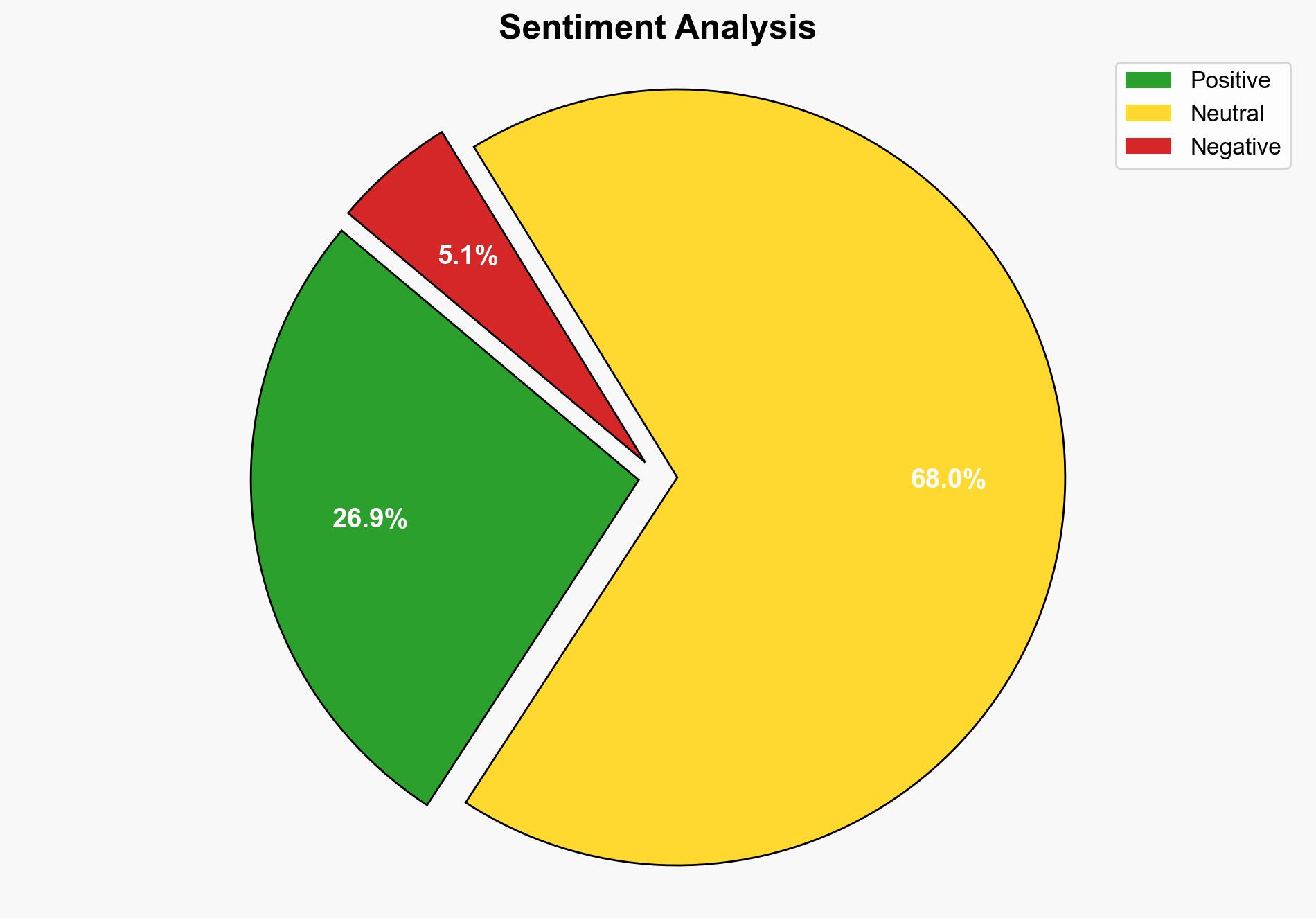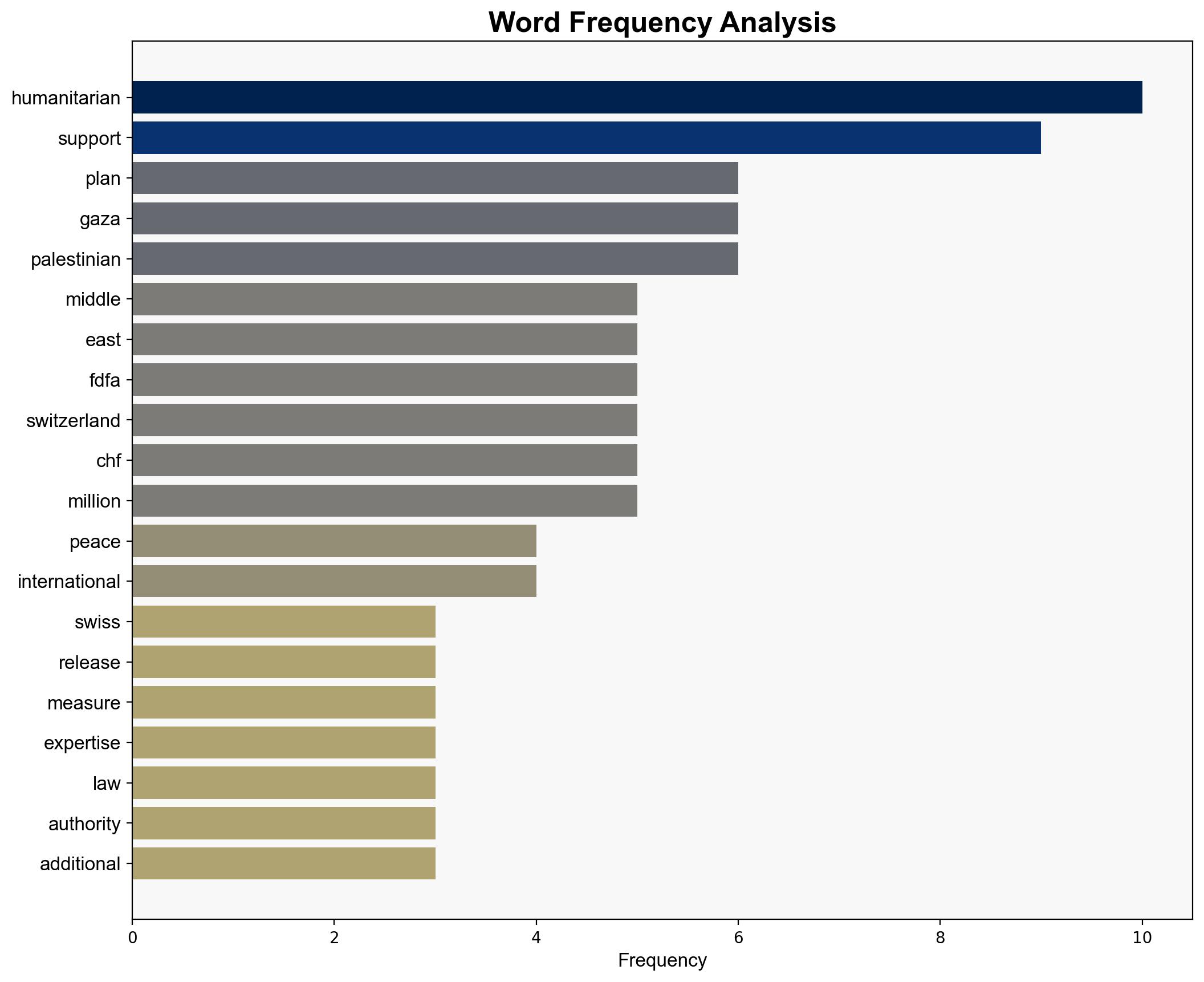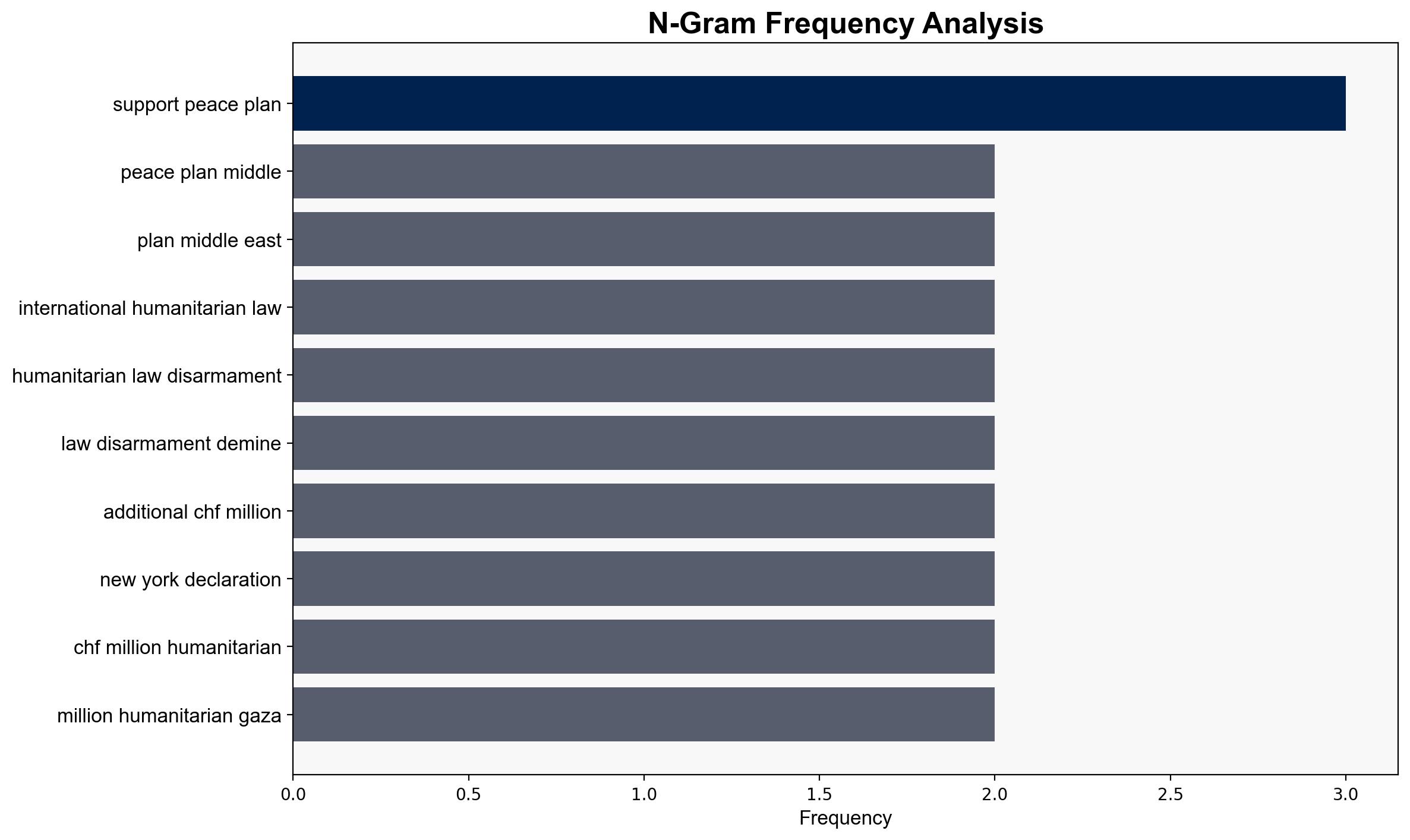Immediate support for US peace plan in Middle East – Globalsecurity.org
Published on: 2025-11-07
Intelligence Report: Immediate support for US peace plan in Middle East – Globalsecurity.org
1. BLUF (Bottom Line Up Front)
The Swiss government’s active support for the US peace plan in the Middle East, particularly through humanitarian and technical assistance, is a strategic move to stabilize the region and reinforce the Palestinian Authority. The most supported hypothesis is that Switzerland’s involvement aims to bolster international cooperation and enhance regional stability. Confidence level: Moderate. Recommended action: Encourage multilateral engagement and monitor implementation effectiveness.
2. Competing Hypotheses
1. **Hypothesis A**: Switzerland’s support is primarily humanitarian, focusing on immediate relief and long-term stability in Gaza and the broader Middle East. This includes technical expertise in international humanitarian law and disarmament.
2. **Hypothesis B**: Switzerland’s involvement is strategically aligned with broader geopolitical objectives, aiming to increase its influence in Middle Eastern peace processes and strengthen ties with key international players, including the US and UN.
Using ACH 2.0, Hypothesis A is better supported due to the explicit mention of humanitarian goals and technical contributions in the source text. Hypothesis B lacks direct evidence but remains plausible given Switzerland’s international diplomatic posture.
3. Key Assumptions and Red Flags
– **Assumptions**: The effectiveness of humanitarian aid and technical expertise in achieving long-term peace; the willingness of regional actors to cooperate.
– **Red Flags**: Potential over-reliance on humanitarian aid without addressing underlying political issues; lack of detailed implementation plans.
– **Blind Spots**: The role of other regional powers and non-state actors in influencing the peace process.
4. Implications and Strategic Risks
– **Implications**: Successful implementation could lead to enhanced stability and reduced conflict in the region, potentially fostering economic growth and regional integration.
– **Strategic Risks**: Failure to address political grievances could lead to renewed hostilities. Humanitarian efforts might be undermined by ongoing conflict or political instability.
– **Cascading Threats**: Escalation of violence in Gaza could disrupt aid delivery and exacerbate humanitarian crises.
5. Recommendations and Outlook
- Encourage continued international collaboration and support for the peace plan.
- Monitor the effectiveness of humanitarian interventions and adjust strategies as needed.
- Scenario Projections:
- Best Case: Successful implementation leads to a sustainable ceasefire and progress towards a two-state solution.
- Worst Case: Breakdown in negotiations results in increased violence and humanitarian crises.
- Most Likely: Incremental progress with ongoing challenges in political and security domains.
6. Key Individuals and Entities
– Federal Department of Foreign Affairs (FDFA)
– United Nations Office for the Coordination of Humanitarian Affairs (OCHA)
– International Committee of the Red Cross (ICRC)
– Palestinian Red Crescent
– Swiss Red Cross
7. Thematic Tags
national security threats, regional stability, humanitarian aid, international diplomacy





